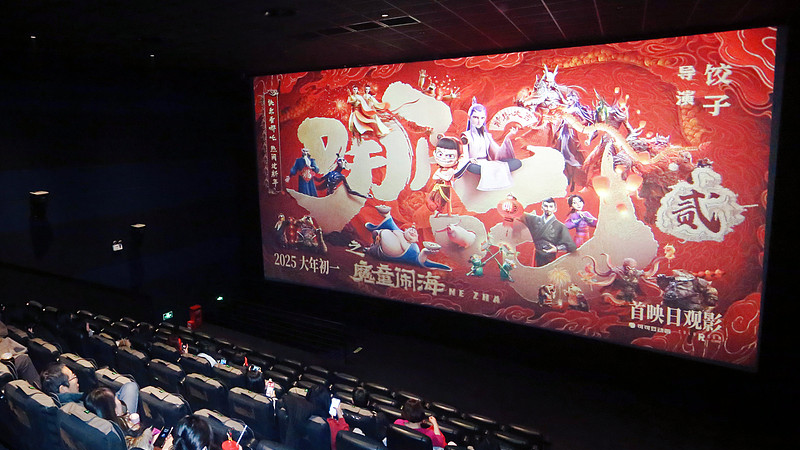In 1905, a silent, 30-minute black-and-white reel captured Peking Opera master Tan Xinpei performing as a general in "Dingjun Mountain" – China's first-ever film – ushering in an era of visual storytelling for the nation.
Now, 120 years later, China has rewritten global box office records with "Ne Zha 2," an animated epic that stands as the highest-grossing animated film of all time and one of the top five films worldwide by total earnings.
In a recent letter to eight veteran film artists, Chinese President Xi Jinping called on the film industry to create outstanding cinematic works that reflect the spirit of the times and express the aspirations of the people, strengthen cultural confidence, stay grounded in real life, and contribute to the prosperity of the arts and the building of a culturally strong nation.
From the muted flickers of early reels to the dazzling spectacle of AI-powered epics, China's cinematic journey has been defined by unyielding innovation. The runaway success of "Ne Zha 2" – which follows the rebellious boy-god Ne Zha and his dragon companion Ao Bing as they reclaim their physical forms and rewrite their destinies – is fueled by breathtaking visuals powered by advanced graphics and custom algorithms that rendered hyper-realistic lava flows, explosive effects and crowd scenes featuring up to 200 million characters in a single frame.
A collaborative network of 138 animation studios across the country worked in unison, elevating both scale and precision to unprecedented heights. Blockbusters like "The Wandering Earth 2" have also harnessed technology, using 3D printing for detailed props, while the "Creation of the Gods" trilogy adopted motion capture and Hollywood-style pipelines to standardize production.
Tapping into a 5,000-year cultural legacy, recent hits such as the "Ne Zha" saga, the "Creation of the Gods" trilogy and "Chang An" have reimagined ancient legends through modern storytelling. This August, CMC Pictures will debut an English-language version of "Ne Zha 2" in IMAX and 3D across the United States, Canada, Australia and New Zealand.
Today, China is the world's second-largest film market. In 2024, audiences recorded over 1.01 billion cinema visits. By July 8, 2025, cumulative box office revenue topped 30 billion yuan—reached 28 days faster than last year. Across more than 30 countries and regions, China hosted international film festivals; at home, 93 imported films generated over 9 billion yuan at the box office.
For industry leaders like actor and China Film Association chairman Chen Daoming, President Xi's letter offers a "profound source of inspiration" to create outstanding works that fuel the arts and build a culturally strong nation. At Beijing's Capital Cinema, manager Gao Ying says the letter awakened a mission "to turn every screen into a cultural window that tells China's story and celebrates the Chinese spirit."
Reference(s):
A letter to inspire: Xi's words echo through China's film industry
cgtn.com




